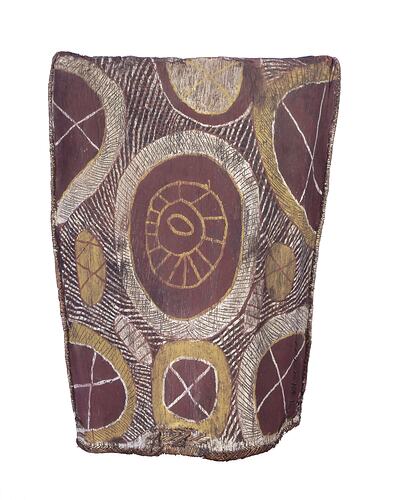Summary
Purukuparli and Bima were the first people on the Tiwi islands and Purukuparli passed down the correct way to bury the dead - the dances, the songs and the designs. A ceremony is held at the graveside about six months after burial and relatives paint their bodies with designs to hide their identity from mapurtiti, the harmful spirits of the dead. Painted bark containers called tunga are broken over the carved and painted poles erected in a circle around the grave. Professor Baldwin Spencer collected an extraordinary array of these containers each painted with a unique design from Bathurst and Melville Islands between 1911 and 1915 and were exhibited in the years following in Spencer Gallery at the old museum site in Russell Street.
Local Name
tunga
Physical Description
A single sheet of bark, Eucalyptus sp., folded over and stitched down the two long sides with cane and painted with natural pigments. The rim and the back are reinforced with close stitching with cane. It is painted with natural pigments, primarily with circular motifs.
More Information
-
Object/Medium
Container
-
Maker
-
Cultural Groups
-
Locality
-
Date Produced
-
Date Collected
-
Object Measurements
600 mm (Length), 580 mm (Width), 870 mm (Height)
-
Keywords
-
References
[Catalogue] Rowlison, Eric, et al. 1981. Aboriginal Australia.
-
Collection Names
-
Type of item
-
Discipline
-
Category
-
Collecting Areas
Australian Indigenous - Northern Australia and Queensland and Torres Strait Islands
